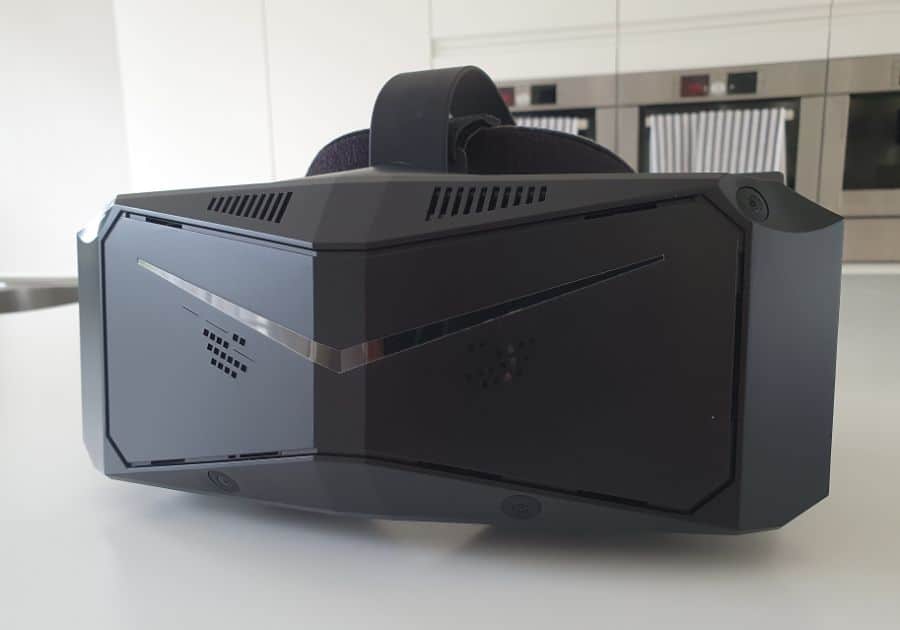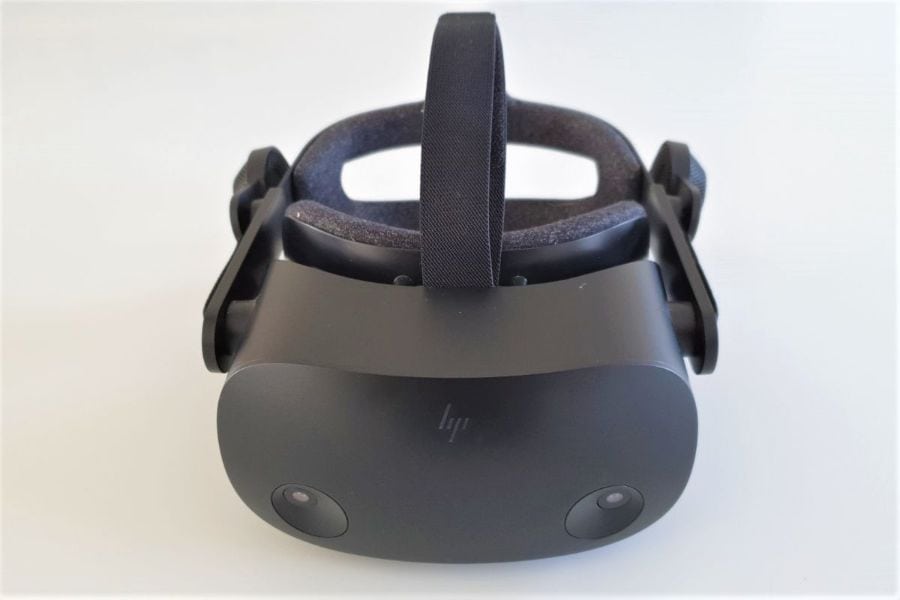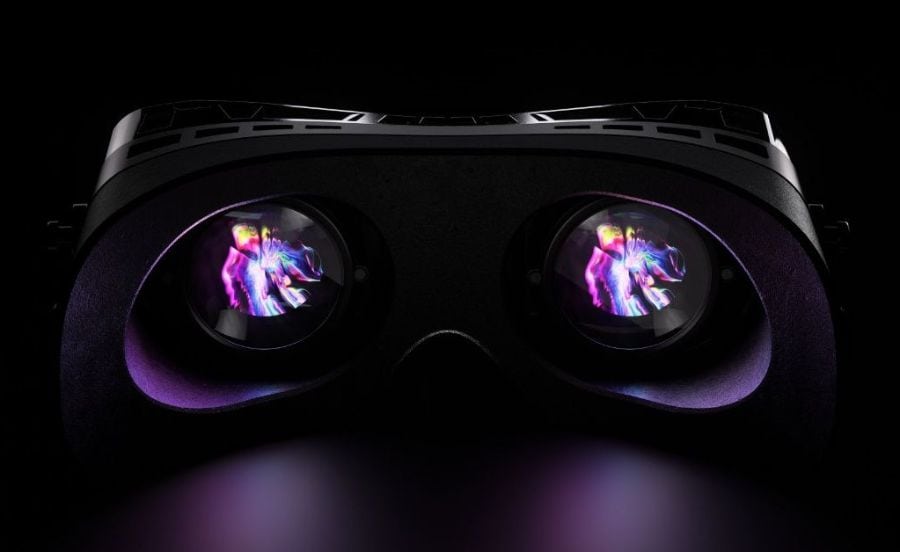
Microsoft Flight Simulator is one of my all-time favorite VR flight simulators, providing an immersive experience for flight sim enthusiasts. This article covers my thoughts on the best VR headsets for Microsoft Flight Simulator. I own most of these headsets and have extensively tested the rest of the headsets on this list. I’m going to share each headset’s strengths and weaknesses to help you choose the best one for you.
Bottom Line – What Is The Best VR Headset For Microsoft Flight Simulator
Your choice of VR headset for Microsoft Flight Simulator will depend on whether you are going to be playing seated PCVR experiences exclusively, or whether you want a more versatile headset. It will also depend on your budget, and whether you are looking for a headset with inside-out tracking or one that uses external tracking. There is no such thing as a perfect VR headset, as they all have pros and cons. Here are my top choices for each category.
- Best Visual Clarity – Pimax Crystal
- Most Versatile – Pico 4
- Best Value – HP Reverb G2
Pimax Crystal

I honestly think the Pimax Crystal is the best VR headset for Microsoft Flight Simulator available right now. The visual clarity of the 2880 x 2880 pixel QLED display panels combined with the glass aspheric lenses, producing 35 pixels per degree (PPD) peak fidelity has really impressed me. It provides a step up in visual clarity from every other VR headset, even the Varjo Aero, which comes a close second in terms of visuals.
The FOV is officially 125 degrees horizontally, and it does feel a little bigger than most other headsets on this list, but not by a huge margin. I love the fact that it has inside-out tracking and I don’t have to bother with external tracking stations. There are many indications where external tracking is great, but sitting at my computer playing MSFS isn’t one of them.
The sound, delivered by the off-ear DMAS speakers is excellent, and the setup is pleasantly straightforward for a Pimax headset. I’ve been using it with almost no issues for the last month, and I’m still really impressed by the incredible visuals offered by this headset.
Although there are a lot of positives, there’s also a lot I don’t like about the Pimax Crystal, including the weight and bulk of the headset, the imperfect head strap, the standalone mode, which is superfluous for VR flight simmers, and the less polished software and hardware compared to some competitors. However, despite the drawbacks, it’s still my favorite VR headset for Microsoft Flight Simulator right now.
The price, at $1600 puts it at the top end of the market, but they do now offer an $800 trade-in value if you would like to upgrade to their upcoming flagship VR headset, the Pimax 12K QLED. Despite the things I would love to change about the Pimax Crystal to make it better for PCVR simmers, it’s still the best VR headset for flight sim enthusiasts who demand exceptional clarity in my opinion. You can read my complete review of Pimax Crystal for more information or watch my video review below.
Pros:
- Unmatched visual clarity with 35 PPD peak fidelity
- Wide 125° horizontal FOV
- Integrated audio provides good spatial sound
- Inside-out tracking, no base stations needed
- Straightforward setup
Cons:
- Heavy and bulky compared to other headsets
- Mediocre head strap could be more comfortable
- Standalone mode wasted on flight simmers
- Software and hardware less polished than competitors
- Very expensive
HP Reverb G2

I’ve logged thousands of hours of use with the HP Reverb G2 since it was released in November 2020. With visual clarity that still competes with some of the best, exceptional comfort, terrific audio courtesy of the excellent off-ear speakers, and a wallet-friendly price, this headset has been a star performer for the VR flight simulation community for the last few years.
It’s tied to the Windows Mixed Reality platform, which is less than ideal, has a small sweet spot in the lenses, and a relatively modest FOV, but it’s an otherwise terrific headset. You should consider the HP Reverb G2 if you want a VR headset that offers good value whilst still standing up well to the competition.
Using this headset for the last three years has been a pleasure. I love how light and comfortable it is to wear, with no comfort issues when using it for hours at a time. The visual clarity in the center of the lenses is exceptional but has now been matched or exceeded by quite a number of other headsets on this list. The drawback is that the visual clarity drops off quickly when you look around with your eyes, which means you need to move your head to look around while flying, rather than moving your eyes.
The FOV is around 98 degrees horizontally, which is perfectly adequate, but it now feels a bit smaller than a number of other competing headsets. It uses fresnel lenses that are very clear, with minimal distortion but suffers from moderate god rays, like many headsets using similar lens technology. Most competing headsets are now using pancake lenses or aspheric lenses which in my experience provide better visual clarity.
HP has actually raised the price of the HP Reverb G2 since its initial launch, so it doesn’t offer quite the same value proposition that it once did. Overall, the HP Reverb G2 is still one of the best VR headsets for Microsoft Flight Simulator for the price, and you will struggle to find a better headset for less unless you are willing to consider Pico 4 or Quest 3.
For users who want to enjoy a broader range of VR experiences, Pico 4 and Quest 3 are probably better choices, but if you’re purely a VR flight simulation enthusiast, you may be better off sticking with the HP Reverb G2. You can read more about my experiences with the HP Reverb G2 here.
Pros:
- Visual clarity is still impressive for reading gauges and spotting landmarks
- Very comfortable and lightweight
- Integrated headphones provide immersive spatial audio
- Reasonably priced for the visual fidelity
- Easy setup with no external sensors required
Cons:
- Mediocre field of view of 98° horizontally
- Small sweet spot in center of lenses
- Uses Windows Mixed Reality
- Can’t be used wirelessly for untethered flight simming
- Resolution and visual clarity are now exceeded by newer headsets
Varjo Aero

After having the privilege of trying the Varjo Aero headset multiple times, I can confidently say it provides an amazing visual experience and I’ve been consistently impressed by both the hardware and software. The visual clarity is fantastic, surpassing all other headsets on this list with the exception of the Pimax Crystal. The comfort is top-notch, with a reasonable field of view, automatic IPD adjustment, and integrated eye tracking.
Reading instruments in your cockpit is far easier than most other VR headsets, and I rarely had to lean forward to make out figures on the smaller dials. It is a considerable step up from the HP Reverb G2 in terms of visual clarity and is only beaten in this department by the Pimax Crystal.
When I first tried on the Aero, the jump in visual fidelity compared to other headsets like the Reverb G2 was seriously impressive. It wasn’t just that the text was sharper and more readable; there was a profound boost in immersion from the realism of the visuals. It truly felt like sitting in a real cockpit rather than a simulation.
The lack of built-in audio is a bit of a letdown, although this does allow you to use your own headphones, which provides some nice flexibility for audiophiles. Personally, I much prefer to have some sort of integrated audio solution, particularly as the audio quality on offer in other headsets continues to improve.
Whilst the Varjo Aero used to be priced out of reach of most consumers, the price has recently been reduced to just $990. You need to bear in mind that the Varjo Aero also requires external SteamVR base stations for tracking, which does add to the cost without much benefit for seated simulator use, but it still ends up being competitively priced compared to other premium headsets.
The superb technical specifications of Varjo Aero, coupled with the polished hardware and software make this a true contender to the throne of best VR headset for Microsoft Flight Simulator. Some will prefer the Varjo Aero over the Pimax Crystal for a range of reasons, but for me, the Pimax Crystal takes a narrow victory.
Pros:
- Exceptional visual clarity
- Very comfortable fit and weight distribution
- Automatic IPD adjustment and eye tracking
- Massive jump in fidelity over most headsets
Cons:
- No integrated audio solution
- Requires external base stations for tracking
HTC Vive Pro 2

The HTC Vive Pro 2 strikes an excellent balance between visual clarity and field of view, without requiring the astronomical investment of the leading headsets. Its 2448×2448 resolution per eye is better than most and the horizontal FOV of 114° feels pretty good in a range of flight simulators.
However, the vertical FOV is just 90°, which can feel restricting at first. I felt a little underwhelmed as a result, but I am aware that an aftermarket face cushion that reduces eye relief can largely resolve this issue.
At under half the cost of the Aero, the Vive Pro 2 remains an excellent middle ground. It uses external SteamVR tracking via Lighthouse 2.0, available in a full kit or headset-only. If you already have these, the HTC Vive Pro 2 becomes a much more appealing option, but if not, it makes it an expensive choice.
The HTC Vive Pro 2 hits a sweet spot for Microsoft Flight Simulator enthusiasts who prefer external tracking. For those with existing Lighthouse setups, it’s an easy drop-in upgrade.
Having spent several days testing the HTC Vive Pro 2, I’ve been generally very impressed, and I believe it strikes a good balance between visuals and FOV at an upper mid-range price point. It’s a generally impressive headset, appealing most to users wanting to stick with external tracking. For the price, it hits a nice sweet spot while stopping short of the impressive performance of Varjo Aero and Pimax Crystal.
Pros:
- Visual clarity is better than most
- 114° horizontal FOV feels good
- Good balance of quality for the price
- Great upgrade for existing Lighthouse users
Cons:
- Narrow 90° vertical FOV
- Still expensive and the specs don’t lead the pack
- No integrated audio solution
- Accessories add to costs
Bigscreen Beyond

The newly announced Bigscreen Beyond offers an incredibly lightweight and compact VR headset optimized purely for visual clarity and comfort. Weighing just 127g without straps and face gasket, it is dramatically lighter than any other consumer VR headset.
It achieves this in part by dispensing with non-essential features, so doesn’t have integrated audio, and has a fixed IPD that is customized to your measurements after ordering. It also relies on external tracking stations which must be purchased separately. While these decisions complicate the order and setup process, they enable the Bigscreen Beyond to have an extremely streamlined HMD design.
Visuals are powered by dual 2560×2560 micro-OLED displays providing extraordinary clarity and vivid colors with 31 pixels per degree. Custom pancake lenses further enhance the visual experience.
The custom-fitted face gasket, made by scanning your face and IPD, ensures comfort and blocks all external light. However, this customization means the headset can’t easily be shared and requires extra setup effort.
At 102 degrees horizontally, the field of view is reasonably wide but not class-leading. There are moderate lens glare issues in high-contrast scenes. And the sweet spot, while adequate, isn’t extremely large.
Overall, the Bigscreen Beyond offers a profoundly lightweight and comfortable VR viewing experience with exceptional visual fidelity. This makes it one of the best VR headsets for Microsoft Flight Simulator for users who prioritize weight and comfort over versatility.
The Bigscreen Beyond doesn’t have the best visual clarity, the widest FOV, or the fullest set of features, but it is easily the smallest and lightest VR headset I have ever tried, and it is a hugely impressive bit of kit. At a price of $1000/£1149, for the headset alone, it makes it a really expensive option if you need to add external tracking stations, controllers, and headphones. But if you want a headset that is sublimely comfortable and light, and customized to your measurements, it is a great option.
Pros:
- Extremely lightweight at just 127g
- Great visual clarity with micro-OLED displays
- Custom fitted for comfort and light sealing
- Wide 102° horizontal field of view
- Pancake lenses provide vivid visuals
Cons:
- Requires external tracking
- No integrated audio solution
- Can’t be shared easily due to custom fit
- Significant glare issues in high contrast
- Expensive at $1000 without accessories
Pico 4

Whilst I’ve looked at some great tethered PVCR headsets for Microsoft Flight Simulator so far, I would strongly advise most people to consider some of the excellent standalone options also. If you enjoy using PCVR flight simulators but also want to experience a range of other VR content, then standalone headsets that can also connect to a VR-ready PC are a great choice.
The Pico 4 offers an excellent standalone VR experience, but can also be connected to a VR-ready PC via USB cable or wirelessly, to enjoy an excellent experience with MSFS. Whilst visual clarity isn’t quite as good due to the data compression that comes with a USB or wireless connection, most people find the difference to be very subtle, and I find myself using Pico 4 on a regular basis to play PC VR content.
The Pico 4 offers an impressive combination of visual fidelity, comfort, and versatility that makes it a compelling option for Microsoft Flight Simulator. Its 2160×2160 resolution per eye delivers exceptional clarity on par with the HP Reverb G2. The LCD displays and pancake lenses result in a crisp, vivid image without any noticeable screen door effect.
I mainly use a wireless connection between my Pico 4 and VR-ready PC and I’m constantly impressed by the visual clarity that I achieve with this headset thanks to the high resolution and hugely impressive pancake lenses. Whilst it doesn’t provide quite the same level of visual clarity as the Pimax Crystal and Varjo Aero, it’s still really impressive, and more than adequate for all but the most hardcore enthusiast.
Comfort is another strength of the Pico 4. The rear-mounted battery provides excellent weight distribution so the headset doesn’t feel front-heavy. While the default face cushion could be more comfortable, third-party options are available.
One drawback of the Pico 4 and other standalone headsets is battery life, which only extends to 2-3 hours, and this may limit the duration of your MSFS sessions unless you use an external battery pack. I use a number of external battery options that are able to extend battery life to 6 hours or more.
Overall, the Pico 4 hits a sweet spot between visual fidelity, comfort, and versatility that makes it one of the best VR headsets for Microsoft Flight Simulator, particularly for VR enthusiasts who enjoy a broader range of content. The exceptional clarity matched with wireless freedom results in an extremely immersive experience of piloting aircraft in virtual reality. You can read more about my experience with Pico 4 in this article, or watch my video review below.
Pros:
- Crisp visuals with 2160 x 2160 resolution per eye and pancake lenses
- Wireless streaming capability
- Excellent weight distribution and comfort
- Standalone functionality provides versatility
Cons:
- Battery life is limited to 2-3 hours
- Default face cushion could be better
- Clarity is not as good as some other headsets
- Compressed video signal between headset and PC
Quest 3

Quest 3 is due to launch in October 2023 and I believe this will be a great option for MSFS enthusiasts to consider, particularly is the idea of a versatile, standalone headset that can function as a capable tethered or wireless PCVR headset appeals to you.
The pancake lenses and resolution of 2064 x 2208 pixels per eye should offer a crisp, vivid image free of distortion, and the expanded field of view compared to Quest 2 will further enhance the sense of presence.
Processing power has also doubled compared to Quest 2, which should ensure smooth performance even in dense urban areas. The ability to play completely wire-free, thanks to the standalone functionality, is a major plus for freedom of movement.
However, as much of an upgrade Quest 3 will be over the Quet 2, the visuals are still going to lag behind most of the other options on this list and battery life is still limited to 2-3 hours. In addition, the basic fabric headstrap seen in the leaks likely won’t be ideal for prolonged flights.
On balance, Quest 3 looks like it will be a compelling standalone VR headset for Microsoft Flight Simulator, but is probably better suited to the more casual user. The visual clarity won’t match premium PC headsets, and accessories like headphones and battery packs will add to the cost. For simmers who prioritize fidelity over mobility, Quest 3 may not be the best choice. But for many, the enhancements and wire-free convenience will be highly appealing.
Pros:
- Upgraded visuals versus Quest 2
- Pancake lenses and 2064 x 2208 pixels per eye resolution
- Expanded field of view enhances immersion
- Fully wireless and standalone
- Doubled processing power
Cons:
- Visuals still lag top-tier PC headsets
- Basic fabric head strap isn’t ideal
- Battery life is still only 2-3 hours
- An upgraded head strap and external battery will add to the cost
